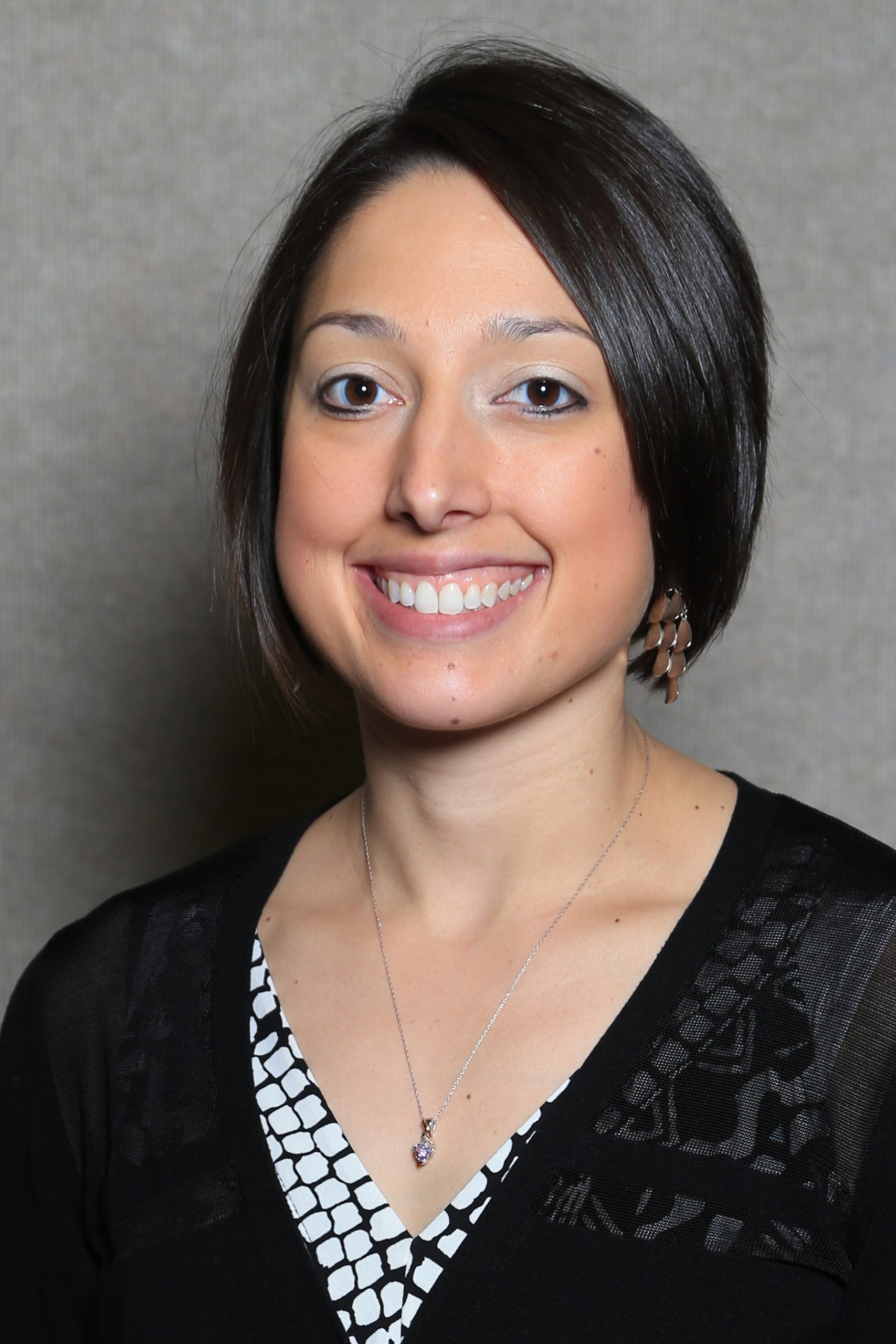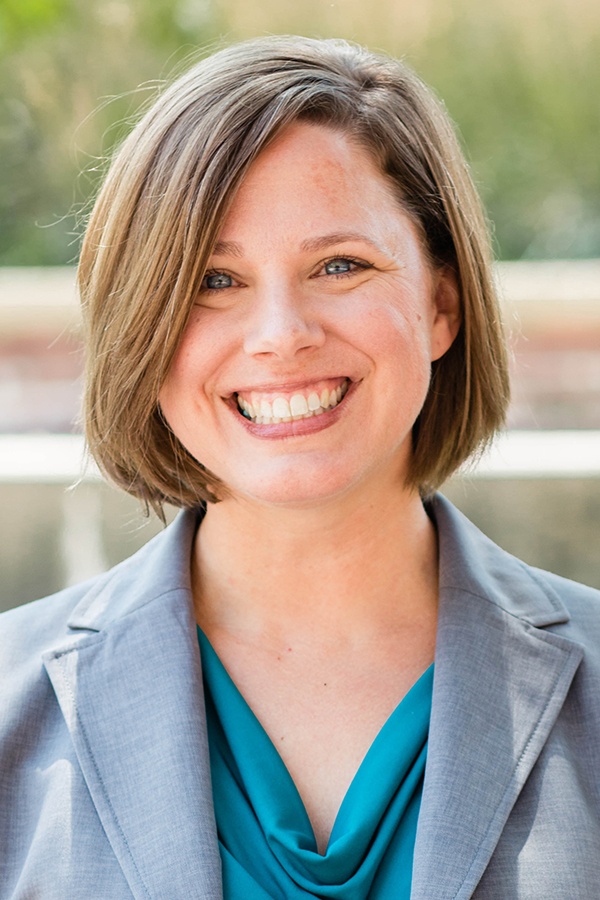FOCUS
ONLINE EXCLUSIVE: District leaders grow with new curriculum
By Kelly Gomez Johnson, Tamara Williams and Matthew Scott
Categories: Change management, College- and career-ready standards, Instructional materials/curriculum, Leadership, Learning systems/planning, School leadershipDecember 2020
Vol. 41, No. 6
During times of immense curricular change, district professional learning often focuses on teachers because they are on the front line of subject-specific curricular and instructional change. In contrast, districts tend to provide little, if any, support on subject-specific curriculum to administrators, while still expecting them to be instructional leaders, even in content areas where they may have limited background experience.
Many of us know that feeling of being expected to lead something without background or support. One of us (Kelly Gomez Johnson) recalls sitting in an interview for a teaching job and being asked by an administrator to coach junior varsity volleyball. Years before, I had played intramural volleyball, and I knew basic rules and terms. But I was uninformed of the newer rules and more complex strategies, and I lacked the deep understanding and vision necessary to be a good coach.
We share this story of uncertainty to put ourselves, and you as readers, in the place of Millard Public Schools in Omaha, Nebraska, where leaders found themselves in a similar position of being unprepared and uncertain about upcoming curriculum changes. The stakes of the game, though, were much higher: mathematics student achievement.
Fortunately, unlike in the volleyball example, the district invested in substantial support for leaders. Building administrators engaged in mathematics-specific instructional leadership training, both before and during the implementation of a new math curriculum.
In collaboration with the district, we at the University of Nebraska at Omaha investigated how mathematics-specific professional learning impacted administrators’ belief in their ability to lead mathematically and communicate a shared vision of mathematics teaching and learning in the district.
We found that the district’s model, which focused all professional learning on content, process, and curriculum design, led to collaboration and collective learning among administrators and prepared them to be the instructional leaders teachers and students need.
Big changes, big opportunities
Curriculum change is an inevitability and an opportunity. As educational leadership researchers and practitioners, we use the term “opportunity” intentionally here, whereas we more frequently hear educators use the words “challenge” or “expense.”
While the latter descriptions may be accurate in some cases, for Millard Public Schools, the opportunity to involve school administrators as subject-specific instructional leaders in mathematics during reform was an exciting, if daunting, opportunity.
When Millard leaders, teachers, and other stakeholders chose to adopt a new elementary mathematics curriculum, Math Expressions, that was philosophically different from the previous curriculum, they knew it would be long road to mastery.
For years, the suburban school district had received praise for students’ above average elementary mathematics scores. However, mathematics scores flatlined in upper grades, and the district recognized gaps in certain areas of mathematical understanding.
The district acknowledged that change was imperative to improve the upward trajectory of student achievement in math, especially in the upper grades. With data in hand, the superintendent announced that K-12 mathematics education would be a significant piece of the district strategic plan for the coming years.
Knowing that building administrators can have significant influence on student achievement (e.g. Hallinger & Heck, 1996; Leithwood & Louis, 2012; Zheng et al., 2017), district leaders believed that successful implementation of a new mathematics program in Millard’s 25 elementary school buildings would require a shared vision among all leaders and a system of support.
As the National Council of Supervisors of Mathematics (2008, p. 56) has explained, “Mathematics programs will only get better when leaders open themselves and other teachers to new ideas, risk imaginatively, and enthusiastically inspire those they lead with a desire to learn and grow together.”
Millard’s district leaders focused their initial training and support on building administrators because these administrators would be asked to serve as instructional leaders in content unfamiliar to their own mathematical learning and teaching experiences.
Further, administrators, unlike teachers, do not have day-to-day interactions with new curriculum or student learning experiences, so they wouldn’t have the same chance as teachers to take a learn-as-you-go approach.
One elementary principal said that the greatest challenge with leading change in mathematics was “not being a step ahead of the learning, but more alongside or behind teachers’ learning.” District leaders knew that this deficit of experiential knowledge could create a challenging reform environment and that successful curriculum implementation would require supporting leaders as well as teachers to reduce, and hopefully close, the gap often seen between curriculum-as-intended and curriculum-as-implemented.
What matters most for leaders
District leaders, including one of us (Matthew Scott) who serves as elementary mathematics curriculum facilitator, identified three key components to integrate into each professional learning activity: mathematics content (standards), mathematics processes, and Math Expressions curriculum design structures.
We used in-house curriculum facilitators, Math Expressions trainers, and university teacher educators/researchers to plan and implement the professional learning for administrators. The goal was to create a consistent and research-based district vision of effective mathematics teaching and learning reaching far beyond the new curriculum materials.
Based on our experience facilitating and observing the professional learning over the course of the year, we have learned four major lessons about what works to build administrators’ knowledge and skills with new curricular content.
- Link new curriculum structures to prior learning.
Curriculum change does not happen overnight. District leaders had been planting the seed of change in mathematics for over three years before implementation. The new curriculum structures now embedded many practices the district had previously incorporated as stand-alone supplements to an outdated curriculum (e.g. math/number talks, mathematical growth mindset).
District leaders made a point to associate the new professional learning with prior learning, hoping to reaffirm administrators’ knowledge from prior mathematics initiatives while also equipping them with new practices based on empirical research and the knowledge to advocate for the curriculum and support staff members in implementing it.
As hoped, following the year-long planning and implementation, administrators expressed increased confidence in their ability to justify changes in mathematical practices to teachers, students, and parents.
- Assign reflective practice homework.
Each month, district leaders assigned homework: They asked administrators to observe, co-plan, or co-teach a mathematics lesson at each K-5 grade level, focusing on content, process, and curriculum. We encouraged administrators to focus on the mathematics, rather than general teaching and learning practices, in part by emphasizing reflective questions that included:
- What skills/standards were taught (content)?
- What was the role of the teacher throughout the lesson?
- How were students engaged in their learning?
- What curriculum structures did you observe?
- Which mathematical processes were evident?
Administrators returned each month to synthesize their observations, discuss similarities and differences, and share their experiences with their administrative peers. While many of the administrators were hesitant at first, especially in co-teaching or co-planning at a variety of grade levels, they later expressed that the experience helped establish trust in their building and increased their belief in enacting change.
- Provide opportunities for collaborative, honest dialogue.
For district leaders to purposefully review, reflect, and revise professional learning for their schools and educators, they needed to hear the real challenges and victories related to curriculum reform across the district. As administrators returned to monthly meetings with observational homework in hand, district leaders planned activities to promote collaborative and honest administrator discussions. Dialogue structures were varied to create an environment where all administrators felt safe, supported, and also active in sharing their personal and building-level experiences.
These dialogues made innovation and progress possible. For example, during one of the early administrator meetings and homework discussions, one administrator noted how helpful a mathematics-specific observation tool had been during a recent walk-through. It turned out that key teacher leaders in the district were already developing a mathematics “look for” tool for elementary classroom teachers and mathematics coaches.
Thanks to this administrator’s willingness to share his feedback and ideas, that classroom tool quickly evolved into an instructional leadership tool for administrators. Soon thereafter, Millard piloted the mathematics-specific observation tool with all elementary administrators.
- Practice drives purpose.
Repeated practice of tools and strategies helped strengthen the learning. For example, district leaders envisioned that building administrators would use the tool described above to guide their mathematics observations and facilitate conversations with teachers and parents about specific mathematics content, processes, and curriculum structures within the new program.
But administrators viewed the tool as something they could hand to other professionals in their building instead of an avenue for improving their own professional capacity as mathematics instructional leaders. This perception was observable in their use and conversation at monthly meetings, and it persisted even after district leaders designed videos, role plays, and other strategies to build administrators’ experience and confidence using it as a leadership tool.
However, as administrators continued to use the tool during ongoing professional learning, the purpose of the tool for administrators’ own learning became more apparent. The aha moment occurred for most of the administrators after participating in mathematical instructional rounds.
Instructional rounds include a preobservation meeting where participants identify a specific problem of practice, three 15-minute classroom observations of mathematics instruction, and a post-observation debriefing (Roberts, 2012; Marzano, 2011; Teitel, 2013; von Frank, 2011).
The instructional rounds process incorporated the observational tool in all aspects of the activity, which allowed administrators to narrow their focus on key components of mathematics instruction based on the problem of practice.
In reflecting on the instructional rounds experience, administrators shared 11 instructionally focused next steps for their buildings based on their experience using the observational tool. In turn, they experienced how the observational tool would not only impact teaching but could also provide a variety of ways they could lead instructionally in mathematics to promote change and achievement.
Without persistent professional learning design by district leaders, the benefits of using the observational tool as a means for supporting administrators’ instructional leadership may have been lost.
Next steps for leaders
Facing massive curricular changes in high-stakes subject areas like mathematics can be scary, and leading change is hard. But we have also seen that curriculum reform environments provide a unique opportunity for building capacity through sustained professional learning.
When curriculum is new to everyone — leaders, teachers, and students — there tends to be an openness to listening and learning as equals. Millard’s mathematics curriculum adoption gave administrators a focused and authentic opportunity to reflect on teaching and learning.
Across Millard’s schools, we witnessed district leaders and building administrators working side-by-side to share a cohesive vision of mathematics leadership. We saw them create a positive, productive network for change through professional learning, thanks to a thoughtful system of support where leaders at all levels were engaged and invested.
As one administrator wrote on an evaluation survey, “I have been grateful for the district-led professional development opportunities provided throughout the year. Our conversations, observation assignments, and opportunities for reflection via curriculum meetings have benefitted me most. The ongoing structure and time for collaborative conversations with my colleagues helped strengthen my understanding of effective math practices, which allowed me to then share that understanding and enthusiasm with my staff. It would have been difficult to get staff buy-in without having authentic buy-in myself.”
Moving forward, the district aims to apply its mathematics-specific professional learning structure and key learnings to upcoming subject-specific curriculum changes in English language arts and science. With consistent learning structures during times of curricular change, Millard leaders and administrators are better prepared to reflectively react to the needs of the district, administrators, teachers, and students.
References
Hallinger, P. & Heck, R.H. (1996). Reassessing the principal’s role in school effectiveness: A review of empirical research, 1980-1995. Educational Administration Quarterly, 32(1), 5-44.
Leithwood, K.A. & Louis, K.S. (2012). Linking leadership to student learning. Jossey-Bass.
Marzano, R.J. (2011). The art and science of teaching: Making the most of instructional rounds. Educational Leadership, 68(5), 80-82.
National Council of Supervisors of Mathematics. (2008). PRIME leadership framework: The principles and indicators for mathematics education leaders. Author.
Roberts, J.E. (2012). Instructional rounds in action. Harvard Education Press.
Teitel, L. (2013). School-based instructional rounds: Improving teaching and learning across classrooms. Harvard Education Press.
von Frank, V. (2011, Spring). What learning looks like: Instructional rounds help define and achieve systemwide improvement. The Learning Principal, (6)3, 1, 4-5.
Zheng, Q., Li, L., Chen, H., & Loeb, S. (2017). What aspects of principal leadership are most highly correlated with school outcomes in China? Educational Administration Quarterly, 53(3), 409-447. doi:10.117 7/0013161X17706152
Categories: Change management, College- and career-ready standards, Instructional materials/curriculum, Leadership, Learning systems/planning, School leadership
Recent Issues
LEARNING DESIGNS
February 2025
How we learn influences what we learn. This issue shares essential...
BUILDING BRIDGES
December 2024
Students benefit when educators bridge the continuum of professional...
CURRICULUM-BASED PROFESSIONAL LEARNING
October 2024
High-quality curriculum requires skilled educators to put it into...
LEARNING TO PIVOT
August 2024
Sometimes new information and situations call for major change. This issue...














